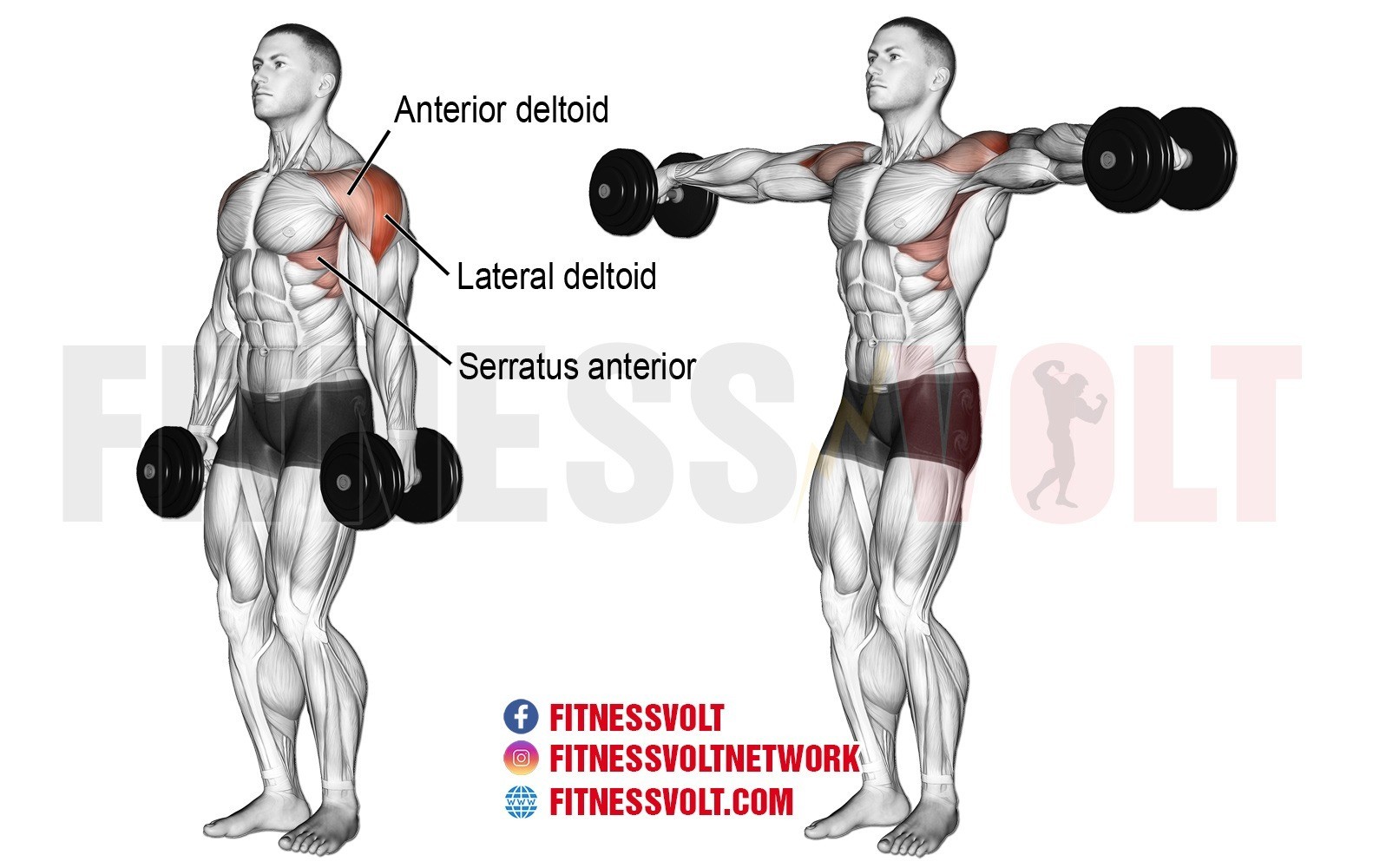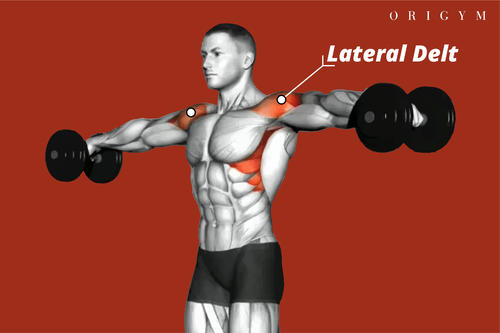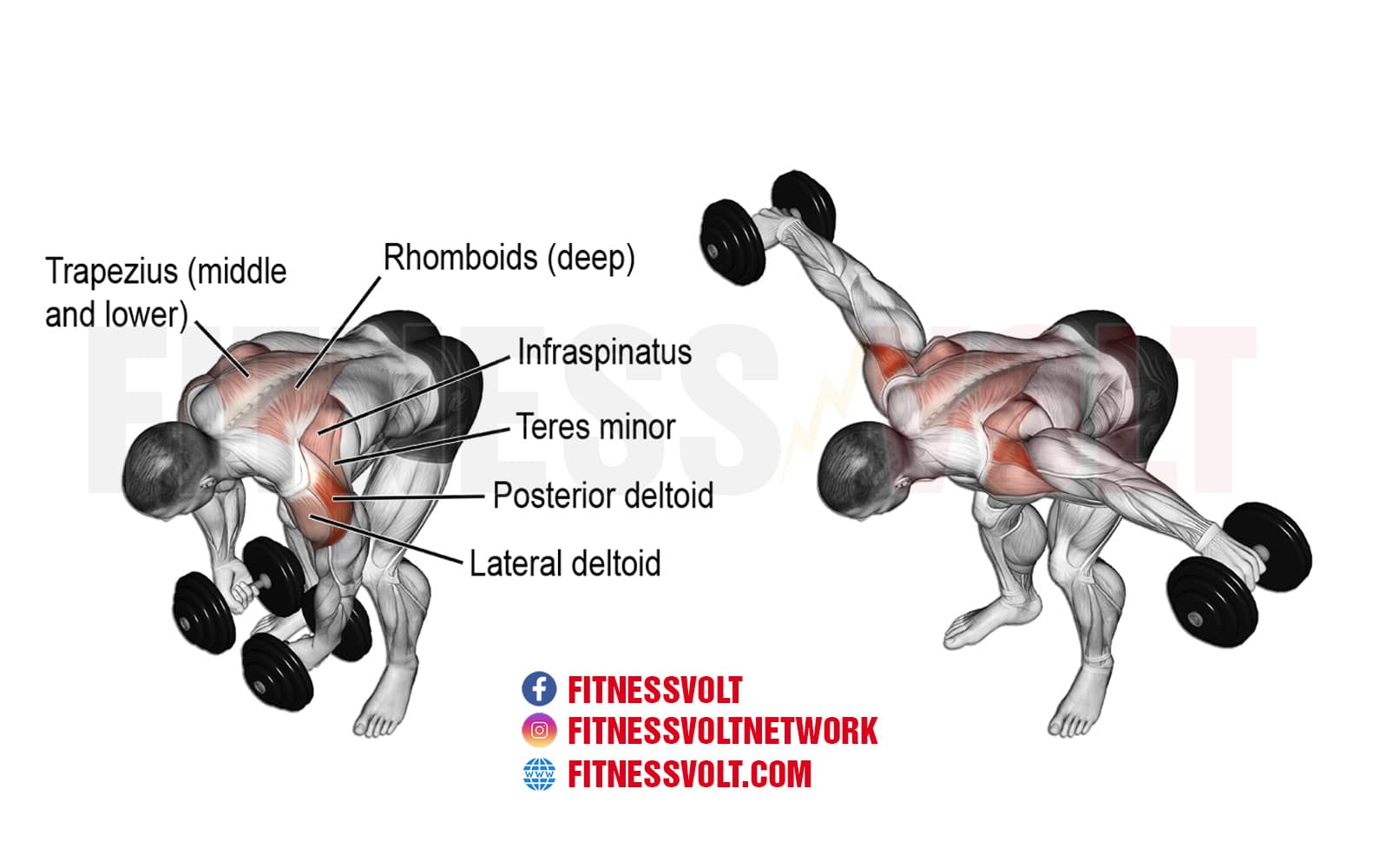
The lateral raise is a popular exercise that targets various muscles in the shoulders, arms, and upper back. It is also known as the side raise, and it involves raising your arms to the side until they reach shoulder height. This movement engages several muscles and can help you develop stronger, more defined shoulders, which is why it is a staple exercise in many workout routines.
Deltoids

The primary muscle group that the lateral raise targets is the deltoids or the shoulder muscles. The deltoids consist of three heads – the anterior, medial, and posterior – and the lateral raise primarily targets the medial head. This muscle is responsible for shoulder abduction, which is the movement of the arm away from the body.
By performing lateral raises, you can strengthen and tone the medial head of your deltoids, resulting in wider and more defined shoulders. Additionally, strong deltoids can also help improve your posture and reduce the risk of shoulder injuries.
Trapezius

Another muscle group that the lateral raise works is the trapezius or the upper back muscles. The trapezius is a large muscle that runs from the base of the skull to the middle of the back and is responsible for shoulder movement and upper back stabilization.
During the lateral raise, the trapezius acts as a stabilizer muscle, helping to keep the shoulder blades in place and prevent them from lifting off the back. This helps to maintain proper form and reduces the risk of injury.
Rotator Cuff

The rotator cuff is a group of muscles and tendons that surround the shoulder joint and help to keep it stable. These muscles are involved in many shoulder movements, including the lateral raise.
During the lateral raise, the rotator cuff muscles work to stabilize the shoulder joint and prevent it from dislocating. This is particularly important if you are using heavy weights or performing the exercise with poor form.
Biceps and Triceps

In addition to the shoulder and upper back muscles, the lateral raise also engages the biceps and triceps. These muscles are located in the arms and are responsible for elbow flexion and extension.
During the lateral raise, the biceps and triceps act as supporting muscles, helping to stabilize the arm and prevent it from swinging or jerking. This can help to isolate the shoulder muscles and make the exercise more effective.
How to Perform Lateral Raises

To perform lateral raises:
- Stand with your feet shoulder-width apart and hold a dumbbell in each hand with your palms facing inward.
- Keep your arms straight and lift them to the side until they are at shoulder height.
- Pause for a moment, then slowly lower your arms back to your sides.
- Repeat for the desired number of repetitions.
When performing lateral raises, it is essential to maintain proper form to avoid injury and engage the correct muscles. Keep your shoulders down and back, engage your core, and avoid swinging your arms or lifting them too high.
Conclusion
The lateral raise is an effective exercise that targets several muscles in the shoulders, arms, and upper back. By incorporating lateral raises into your workout routine, you can strengthen and tone your deltoids, trapezius, rotator cuff, biceps, and triceps, resulting in stronger, more defined shoulders and improved posture.
Remember to use proper form and start with light weights if you are new to the exercise. As you progress, gradually increase the weight and reps to challenge your muscles and achieve your fitness goals.